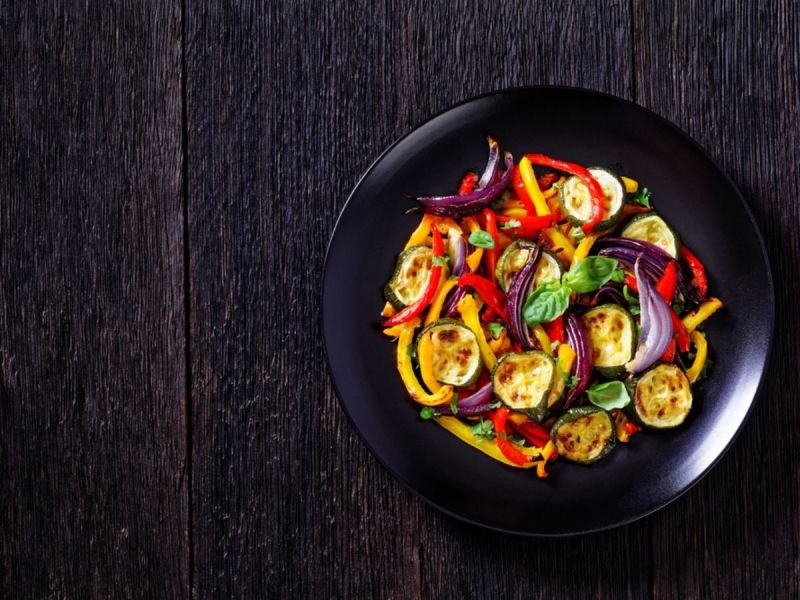Fitting the proper amount of vegetables into our daily diet isn’t easy, even as an adult. As it turns out, being grown-up doesn’t automatically turn you into someone who loves veggies. If you’re like me, you find nutrient-rich, raw vegetables to be kinda gross—or bland, at best.
Videos by Suggest
I try my best to focus on the health benefits and ignore the less-than-satisfying flavor. But honestly, I’ve been known to absolutely douse carrot and celery sticks with ranch dressing … and I’m pretty sure that’s defeating the purpose.
RELATED: This One Simple Hack Can Help Make Your Roasted Veggies Even Crisper
Cooked veggies are a vast improvement, but being from the Midwest I learned to cook them in butter or bacon fat. I just can’t seem to get veggies right no matter what I do. If only there was a way to make veggies more flavorful while preserving all the health benefits … *wink wink*.
Green Tea And Vegetables?
Green tea apparently has an incredible PR team, because it’s widely touted as one of the healthiest beverages on planet Earth. It’s loaded with antioxidants, and its nutritional compounds have been linked to numerous health benefits like improved brain function and fat loss. It’s also been proven to lower the risk of heart disease and cancer and protect the brain from aging.
RELATED: This Type Of Tea Has More Antioxidants Than Green Tea, And Is Great For Keeping Blood Sugar In Check
Because of its earthy, floral taste, green tea has a flavor profile that pairs extremely well with steamed or roasted vegetables. What’s more, when you pair it with red, orange, or yellow veggies—which get their bright colors and anti-inflammatory properties from plant pigments known as carotenoids—they make for an especially nutrient-rich combination.
Methods To Incorporate Green Tea In Your Cooking
To infuse some much-needed flavor into your everyday veggies, you can use green tea bags or matcha powder. The flavors work particularly well in Asian-inspired dishes mixed with ingredients like ginger and soy sauce.
- Steep veggies with a tea bag: Place a tea bag into the water while your veggies are boiling. If you prefer to steam your veggies, you can still add the tea bag to the water—the green tea flavor just won’t be quite as rich.
- Make a green tea infusion: Steep a green tea bag in water for 10 minutes, then mix it with ginger, soy sauce, and other ingredients. This can be used as a base for green tea-infused stir-fry with both frozen veggies and garlic.
- Make a sauce: For a different green tea stir-fry method, combine a teaspoon of matcha powder with soy sauce and sesame oil and cook the mixture with your veggies.
- Make a soup: You can do this by using pre-made green tea noodles, or read on to learn how to infuse your noodles with green tea on your own.
Recipe For Cold Tea Noodles
The book Cooking With Tea: Techniques and Recipes for Appetizers, Entrees, Desserts, and More by Robert Wemischner and Diana Rosen features this delicious yet amazingly simple recipe for cold tea noodles.
Things You’ll Need:
- A quart of water
- 2 tsp green tea leaves
- 8 oz dried udon noodles (can substitute linguine)
- 6 oz firm tofu (can substitute bits of chicken or dark turkey meat, roasted mushrooms, fresh soybeans, or lima beans)
- 2 oz enoki mushrooms
- 4 scallions, chopped
- Light soy sauce
- Sesame oil
- Freshly-chopped cilantro leaves
- Freshly-ground black pepper
You’ll start by brewing your green tea and then using it to cook the udon noodles or linguine. Once your noodles are cooked, the work is almost done (when we said simple, we meant it!).
Simply place the cooked noodles into two bowls, then scatter the tofu cubes (or your substitution protein), mushrooms, and scallions over the noodles. Finally, dress it to taste with the soy sauce, sesame oil, cilantro leaves, and black pepper before serving.
